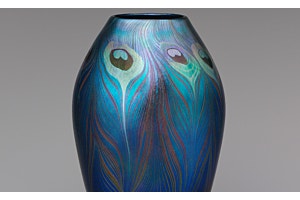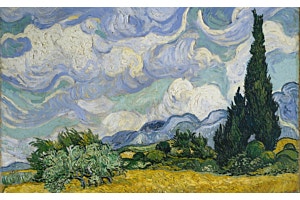
Much can be said about the importance of nature in Gothic art and architecture. Frequently used as a metaphor for religious themes, natural imagery served as more than decoration; often employed as an allusion to biblical themes, nature also bore the blueprint of its divine creator and was therefore viewed as the embodiment of a higher power.
From leafy fronds carved into capitals to frescoes of lions and magnificent tapestries bearing stags, flora and fauna can be seen all over The Met Cloisters, which is dedicated to the art, architecture, and gardens of medieval Europe.


The Met Cloisters was built with the help of three collaborators: John D. Rockefeller, who selected the site for the Museum; George Grey Barnard, a sculptor and collector of medieval art; and James J. Rorimer, a curator of medieval art at The Met. The building is an assemblage of various cloisters shipped over from France and Catalonia, and reconstructed stone-by-stone as a cohesive museum in Upper Manhattan's Fort Tryon Park. In 1938, The Cloisters opened to the public.
One such cloister, some of which is now in The Met collection, is Saint-Guilhem-le-Désert, a Benedictine abbey originally located near Montpelier in the South of France. Founded in the year 804 by Guilhem au Court-Nez, Duke of Aquitaine and a paladin of Charlemagne, it became an important pilgrimage site due to a claim that the abbey possessed a fragment of the True Cross. In the late 12th century, the compound was expanded to accommodate an additional double cloister.


After the 12th-century extension was destroyed during the French Revolution, the remnants of the columns and pilasters were collected by a local winemaker and repurposed as supports for his vineyard. In 1906, Barnard purchased the architectural ensemble, which he subsequently regarded as the pride of his collection for the way it exemplified the “patient Gothic chisel.” Today, the Benedictine abbey—which is reconstructed with over 140 components from the original structure—is housed at The Met Cloisters.
A noteworthy feature of the Saint-Guilhem cloister is a limestone column from the 12th-century extension of the abbey. The column’s carvings teem with natural imagery, from acanthus leaves twisting around the capital to layered fronds climbing up the shaft. At the apex of the column, the abacus is dotted with mallow flowers. At the corners, dog’s heads stare down at the beholder.


The presence of plants and animals adds a rich decorative flair to the column’s architectural elements. However, these motifs likely functioned as more than pure ornament. While the exact significance of the column’s iconography has been largely unstudied, images of nature in late medieval art often served as references to passages in the Bible. More broadly, nature also embodied the design of God’s creation. Depictions of nature were thus a means for medieval craftsmen to honor—or embody—divinity through art.


Our Met Cloisters tableware honors the enduring ingenuity of Gothic craftsmanship. Made of stoneware, these microwave- and dishwasher-safe plates, mugs, and bowls in both black and white are inspired by the vegetal patterns found on the Saint-Guilhem column shaft.


Just added to our website are the Met Cloisters Rectangular Trays, also available in black and white as well as small and large sizes.


Plus, new to The Met Store is the Met Cloisters Garden line of stationery and ornaments celebrating a brilliant book of early 16th-century French flower studies on view in Gallery 10 at The Met Cloisters. Created by the Master of Claude de France, this rare book belongs to what's been called "the last flowering" of Northern European manuscript illumination in the medieval tradition. Each exquisitely detailed watercolor, articulated with gold and silver paint, depicts a plant that can be found in the gardens of The Met Cloisters.


Shop online or visit us in-store to learn more about our Met Cloisters-inspired designs.



